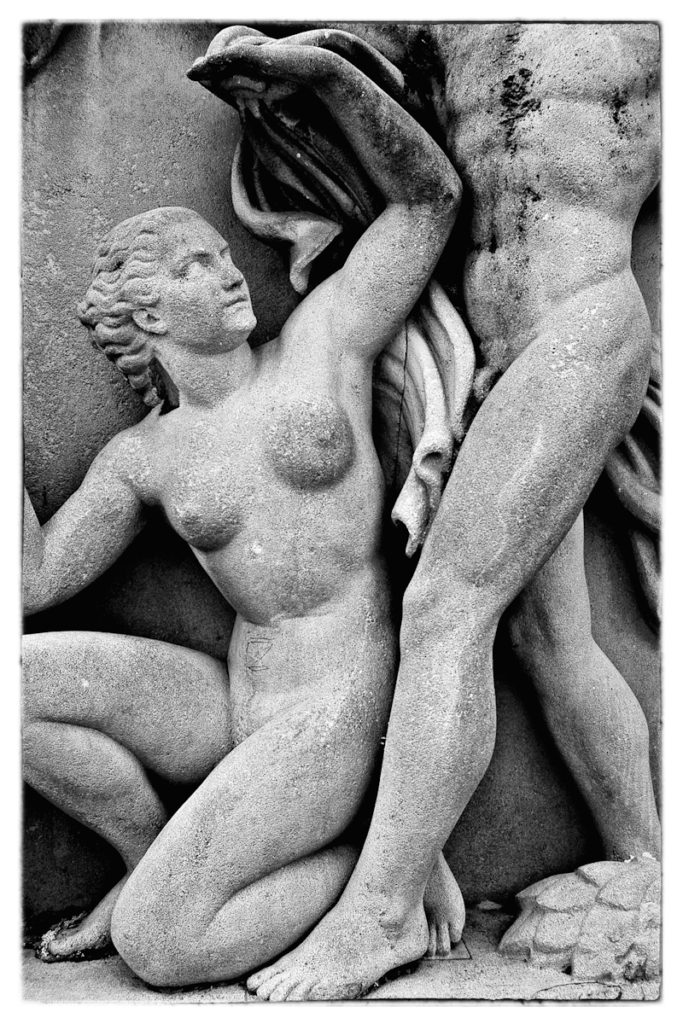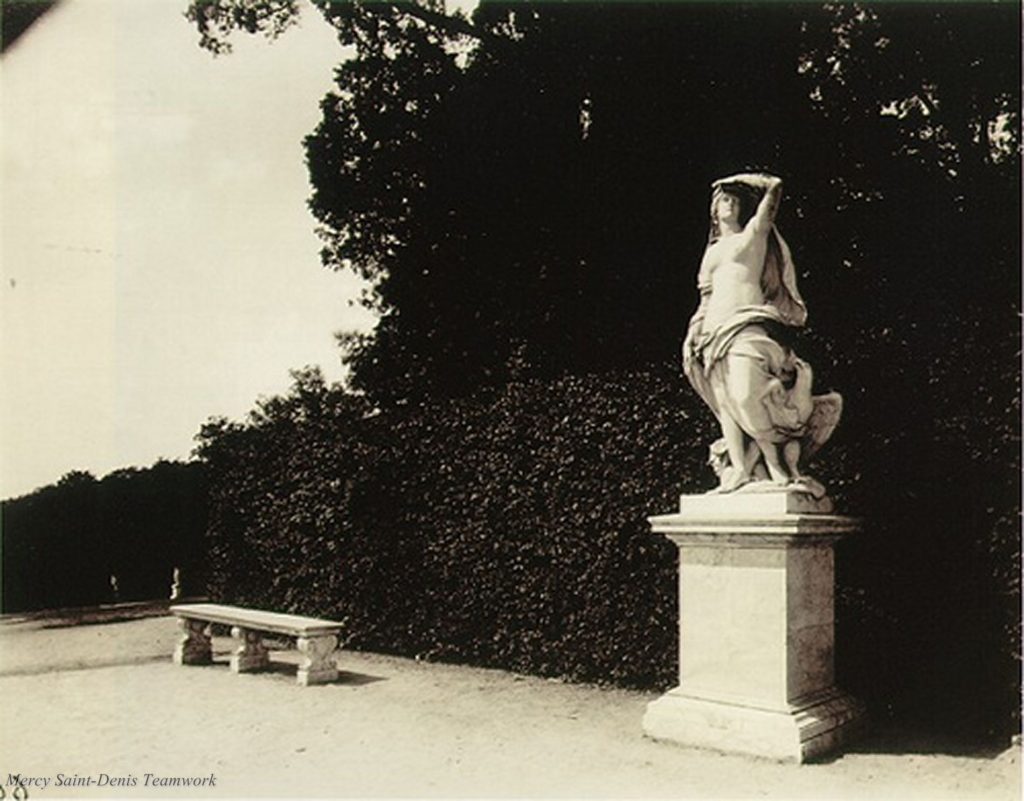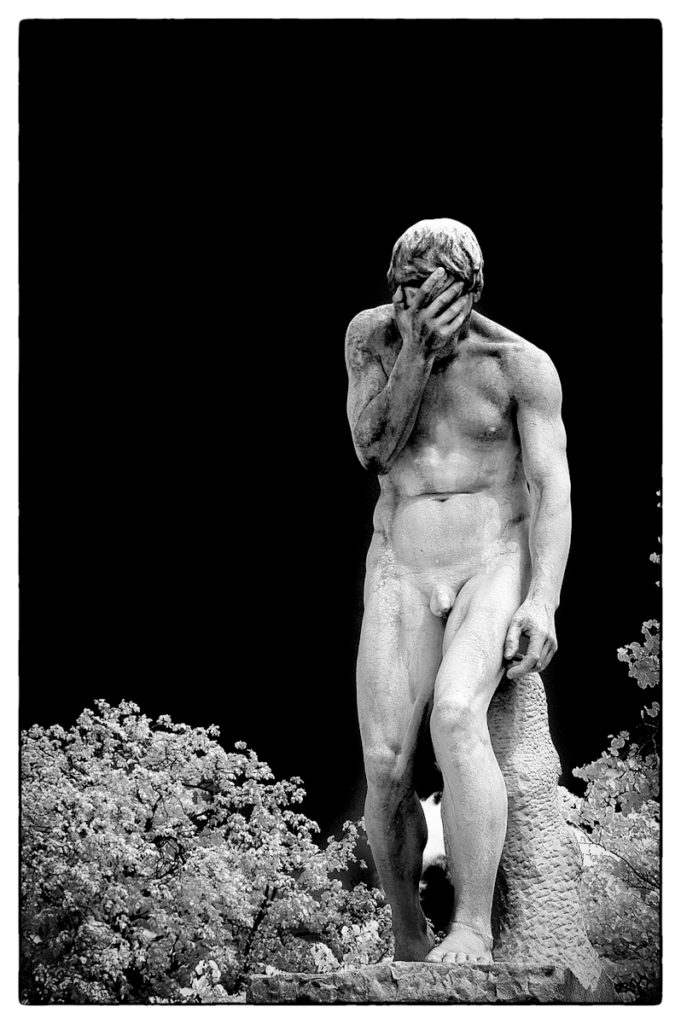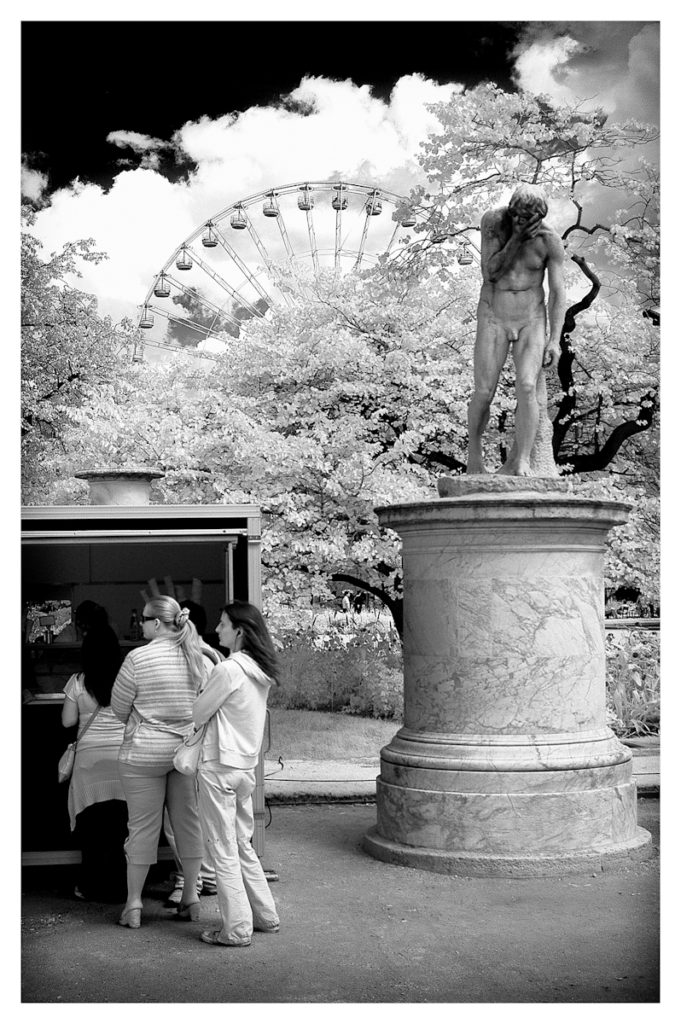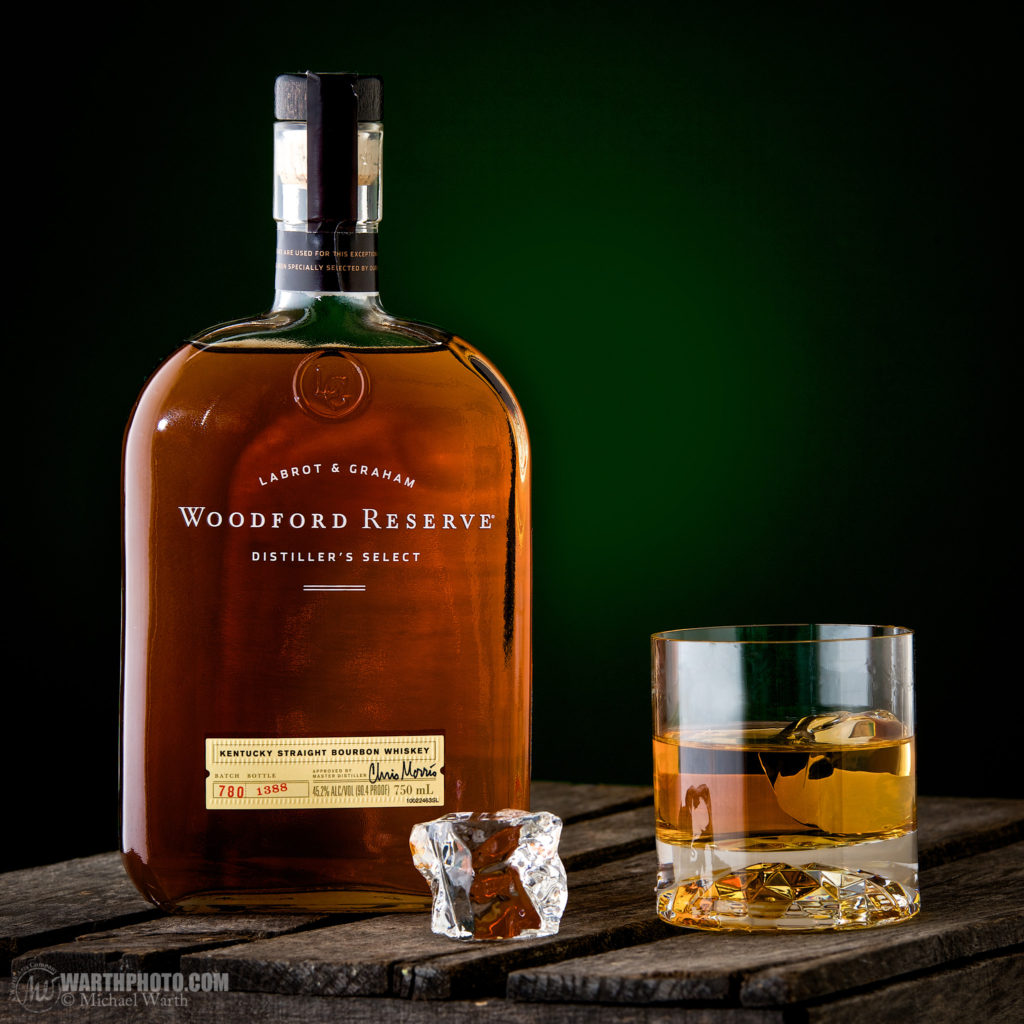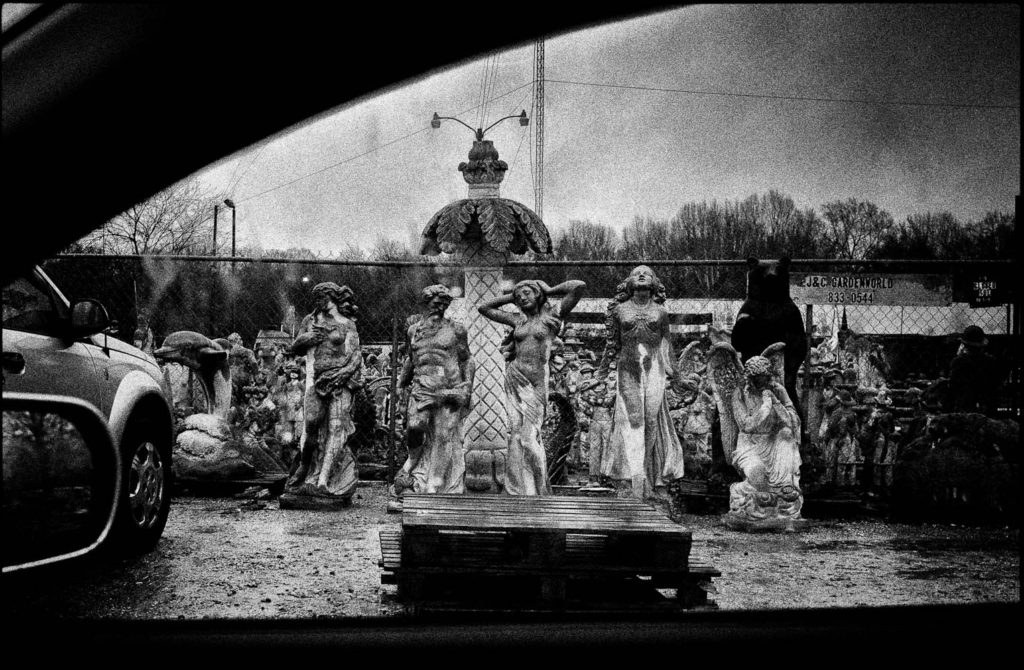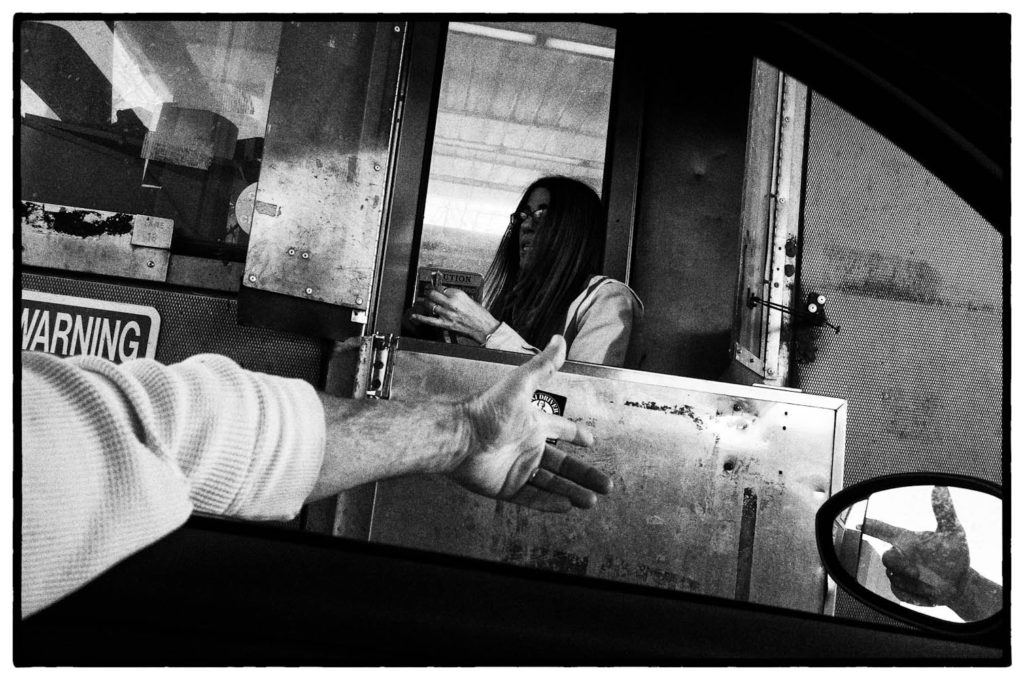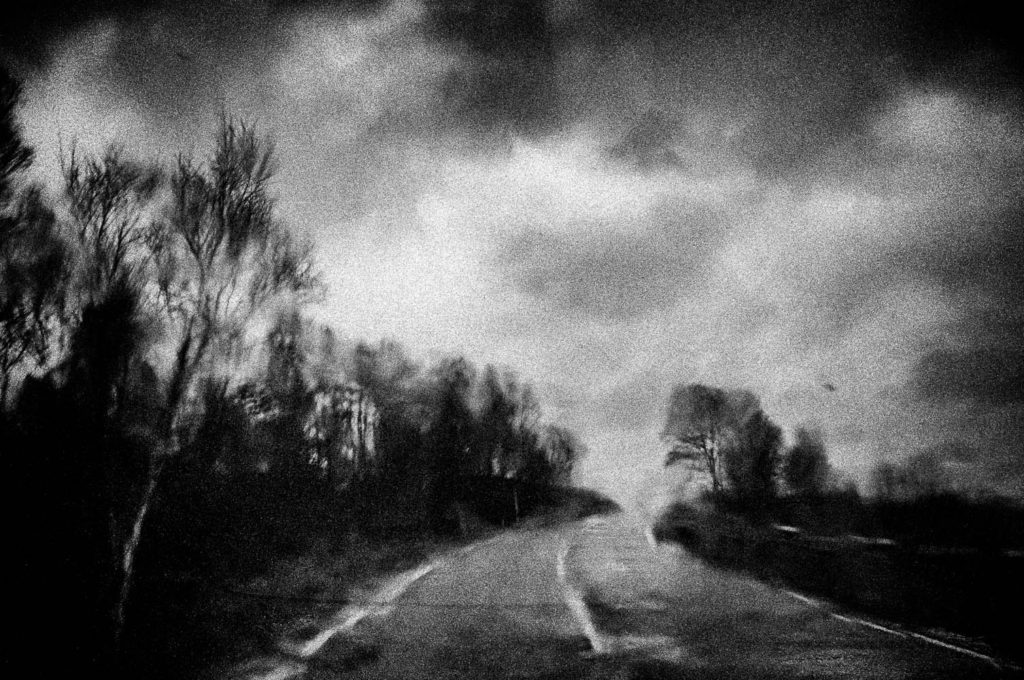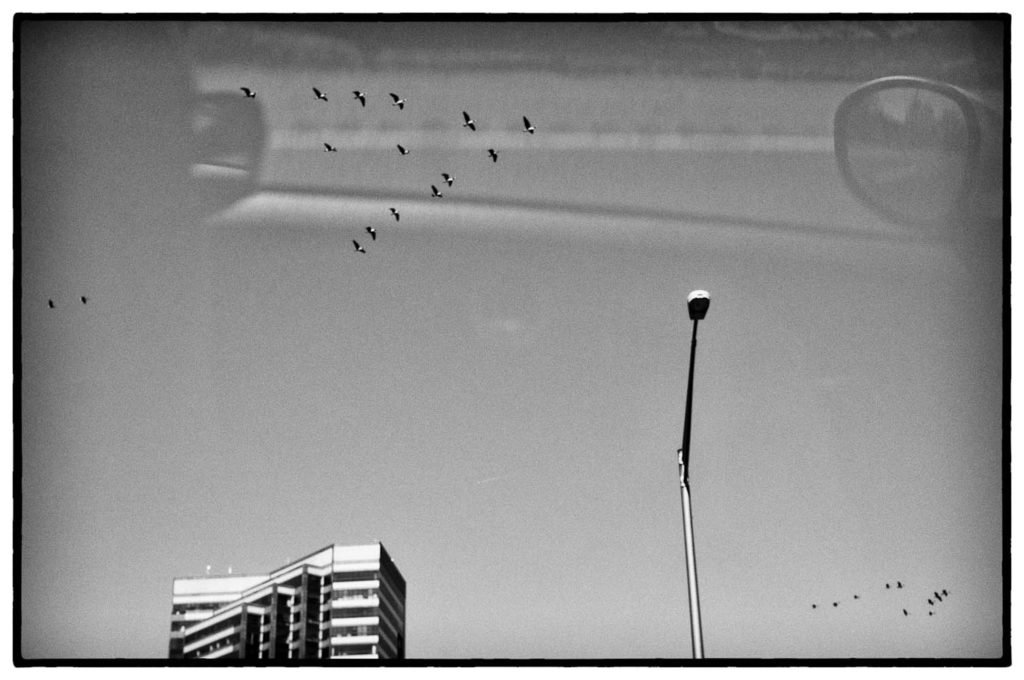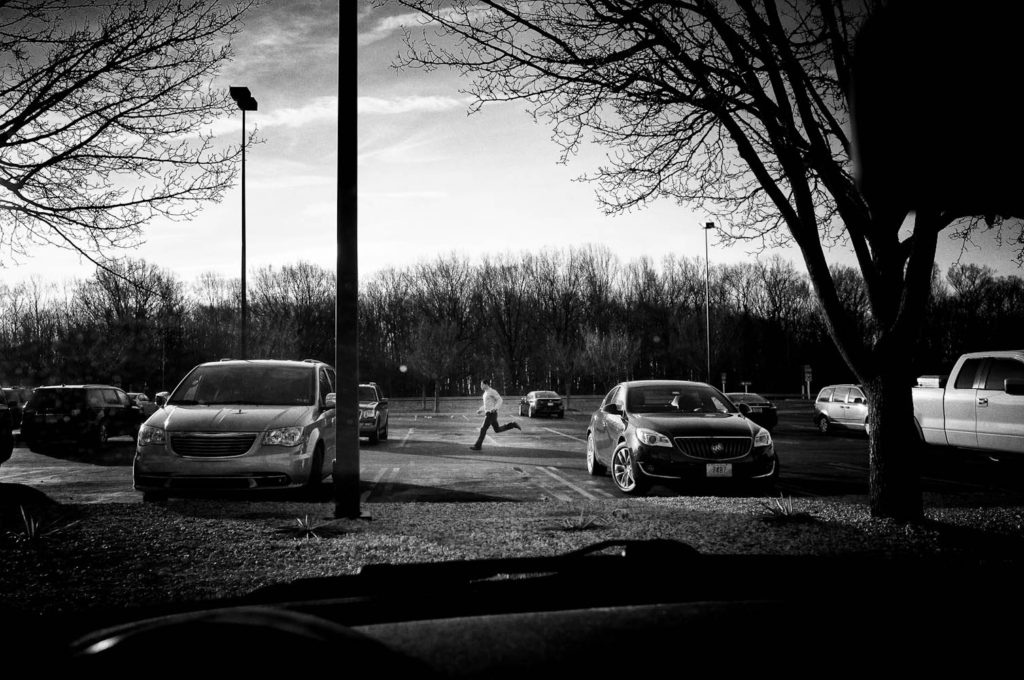Trocadero, Paris
Above is a photo of a portion of a statute that sits in the Jardins du Trocadero directly across the Seine from the Eiffel Tower. I’ve long been intrigued by Eugene Atget’s photos of Paris from the turn of the century, so once there I went around trying to do the same thing. Atget, a commercial photographer, spent his career in anonymity documenting Paris and environs with an 8×10 view camera. In addition to photographing streets, courtyards, cafes and city denizens, he photographed a lot of architectural details…and statuary. Lot’s of statuary. Like Vivian Maier, his work was “discovered” by someone who made it know to the wider world after his death.
John Szarkowski, photography writer and curator of photography at the Met in New York, published a book about Atget wherein he claims Atget not merely a great 20th century photographer but “one of the great artists of the 20th Century.” The book Atget, published by the Museum of Modern Art, contains 100 duotone and tritone photos, most of people-less fixed scenes, statuary included. Below is the jacket’s cover photo:
What’s interesting, given the acclamation of Atget as a “great artist,” is that Atget didn’t consider himself an ‘Artist,’ He never tried to manipulate his photographs to reflect a specific artistic sensibility or any defined artistic principle. He was a working photographer trying to document things as accurately as possible. Yet it’s hard to argue with those who claim him to be an ‘Artist.’ His best work has an immense formal beauty somehow apart, or more precisely added onto, the formal beauty of his subjects.
*************
Jardin des Tuileries, Paris
Above is a picture of a statute in the Tuileries. You could argue that it’s not the same as Atget’s; the photographer (me) attempted to impose some sort of individual sensibility onto the subject. Its a pretty straight shot…shot with a Nikon D100 modified for IR use. The only “sensibility” I brought to the photo was the composition and the choice of IR. It isn’t a straight document. Could I call it ‘Art?’ The reason I ask is because a lot of otherwise sophisticated viewers might chafe at calling Atget’s photos Art. I assume they’d say that any aesthetic value found in the photos inheres in the subject itself and not the photograph of it.
Jardin des Tuileries, Paris
Above is another photo of the same statute in the Tuileries, this time with other formal and documentary elements the photographer has chosen to include. It’s easier to claim this for ‘Art,’ because I’ve presented the pictorial elements so that their relation to each other suggests a meaning, might hint at something more than what simply appears in the picture.
What about the Trocadero photo that opens the piece? Same thing, or different? I’ve got a 16×20 platinum print of it hanging in my office. I love it. Is it a photo f a thing – a documentary record – or is it itself it’s own creation when considered apart from the content? It speaks to me both formally and emotionally. I’m sure other people, visitors to my home, have looked at it and thought of it only as a snapshot of a Parisian statute I’m inordinately fond of, when in fact what I see is a photograph with its own aesthetic worth apart from the specific subject.
In my last post I’d referenced a few photos I’d taken on a recent walk. The premise of the piece is that everyday things can possess a formal beauty. What’s important is that you be open to it. I used a couple of photos I’d taken while walking dog to illustrate. What I hadn’t mentioned was that one of the photos, the one I’d used to open the piece, had been germinating in my mind for some time. I’d walked past the subject daily; I’d eyed it a thousand times, each time thinking “I need to photograph that.” I finally got around to doing it. I love what I got. A 16×20 is going on a wall somewhere, for no other reason than it speaks to me. Maybe it’s my eye as a painter that’s allowed me to abstract from the objective, public nature of things ‘out there’ and consider them in their formal natures. Maybe it’s my formative years having been fascinated by Walker Evan’s photography, Evans being much like Atget in his sensibilities and aims. Maybe I’m just a photographic hack massively overthinking all of this, or worse yet palming off my cliched photos as ‘Art.’ Damned if I know.
I love this. It’s Gonna Hang on my Wall Somewhere
Views: 1682

